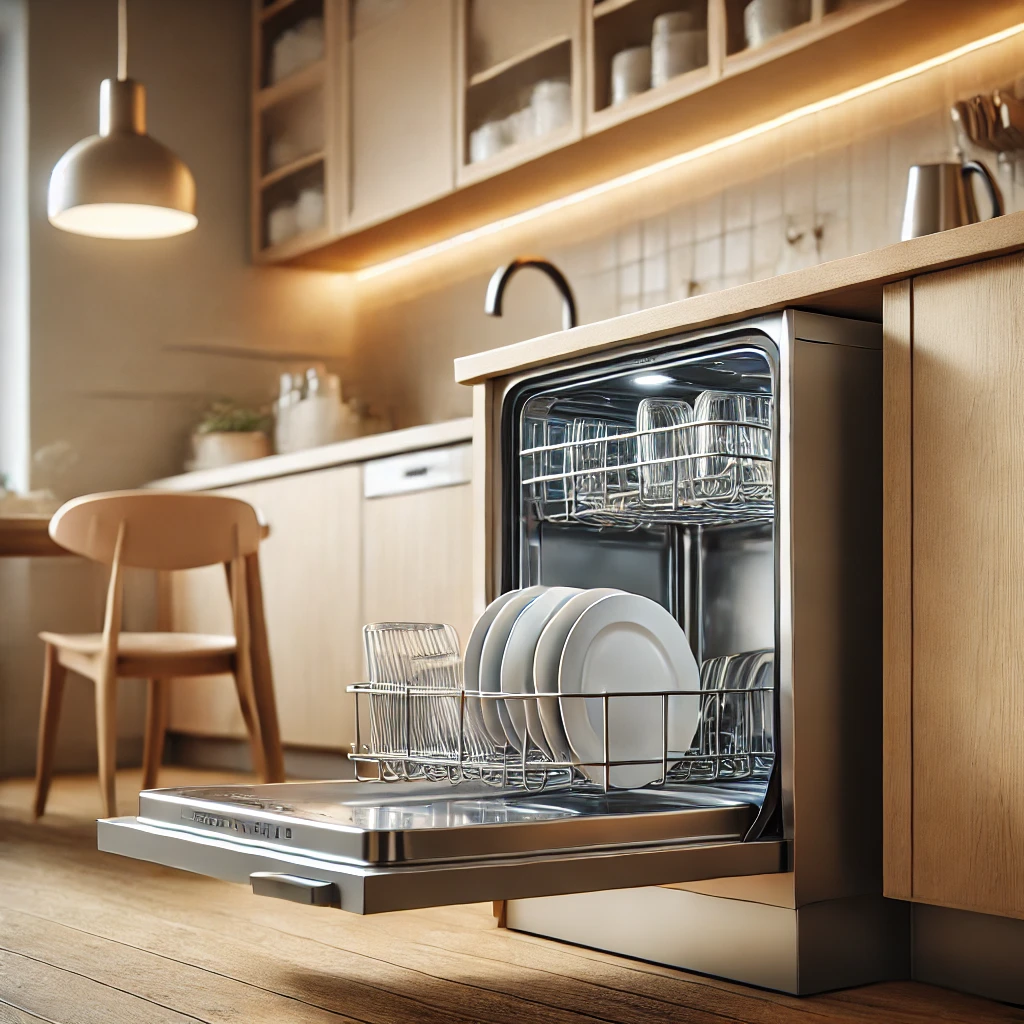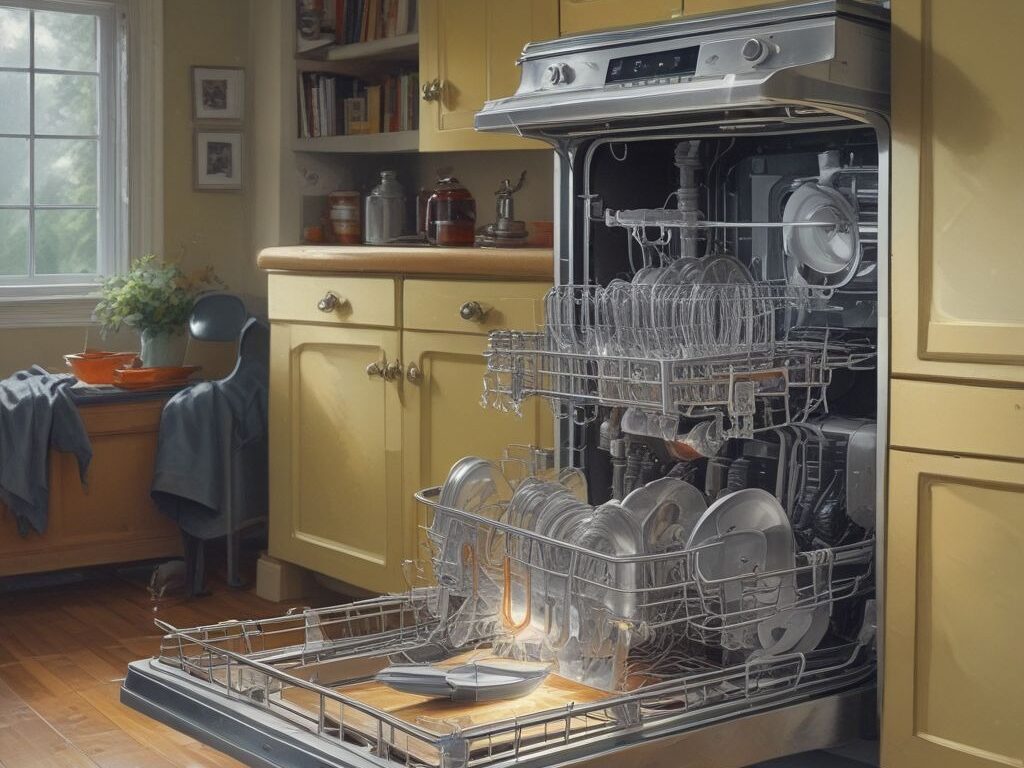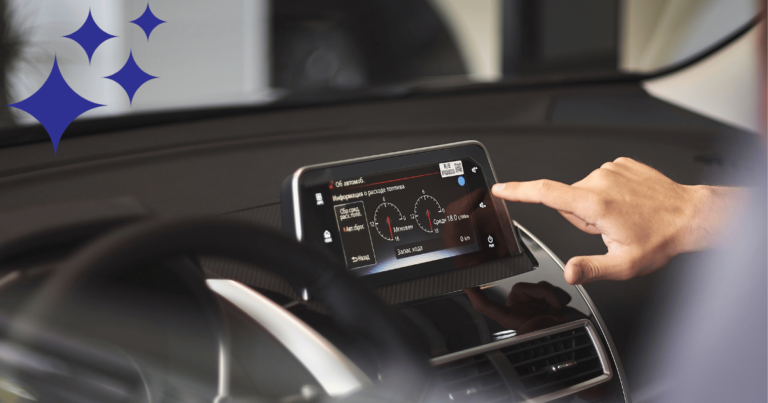How to Use Dishwasher Like A Pro

Dishwashers have become a must-have appliance in many homes, making the task of cleaning dishes easier and quicker. However, not everyone knows the best ways to use them to get the most out of their performance. This guide is here to help!
From loading your dishwasher correctly to choosing the right detergent and understanding different cycles, we’ll cover everything you need to know. Whether you’re used to handwashing dishes or recently got a fitted dishwasher, this guide will help you operate your dishwasher efficiently.
We’ll address common concerns like getting rid of dirty dishes, taking care of your cookware, and controlling the performance of your dishwasher. With our simple tips, you’ll be washing dishes like a pro in no time. Let’s dive and know how to use dishwasher like a pro.
How To Wash Dishes In The Dishwasher
1. Load The Top And Bottom Racks Of The Dishwasher
Loading the dishwasher correctly is key to getting clean dishes. Start by scraping off any extra food from the plates.
In the top rack position small bowls, mugs, wine glasses, and cups. Make sure everything is evenly spaced and the dirty side faces down to ensure the water jets can reach every surface. Place plastic containers and lids carefully to avoid warping.
In the bottom rack load dinner plates, large kitchenware, and serving platters. Arrange dishwasher-safe baking dishes, heavily soiled dishes, and stainless steel pots on the sides and back to avoid blocking the wash arms. Sharp objects like knives should go in the utensil basket to prevent injury. Use the third rack for extra silverware and hard-to-fit items if available.
By following these steps, you can achieve clean dishes effortlessly.
2. Load The Dishwasher Detergent
To get the best performance from your dishwasher, it’s important to load the detergent correctly. Here’s a simple guide:
First, choose the correct detergent. There are different types of detergents like liquid, powder, gels, tablets, or packs. Automatic dishwashers have detergent dispensers designed for these.
- Open the dishwasher door.
- Locate the detergent dispenser.
- Measure the detergent up to the fill line. If you are using detergent tablets or packs, place one in the dispenser.
- If your dishwasher has a rinse aid dispenser or rinse aid basket, fill it with rinse aid to help with the pre-wash cycle.
- Close the lid of the detergent dispenser.
Remember, using the right mix of detergent and rinse aid depends on personal preference and your dishwasher model. This ensures your dishes come out clean and spotless.
3. Select A Wash Cycle
Selecting the right wash cycle on your dishwasher is important to get your dirty dishes clean. Depending on the type of load and how soiled the dishes are, you can choose from different cycles. For lightly soiled dishes that need to be cleaned quickly, you can use the Quick cycle.
For everyday messes, the Normal cycle is perfect. If you have heavily soiled cookware or need extra cleaning power, the Heavy Duty cycle is the way to go. Simply press the appropriate button on the top or front of your dishwasher door to select the cycle that best suits your needs.
Quick
- Ideal for lightly soiled dishes.
- Cleans quickly and uses less water.
- Perfect for when you need dishes in a hurry.
Normal
- Great for everyday messes.
- Offers optimal performance for most dish loads.
- Maintains water temperature around 120ºF for effective cleaning.
Heavy Duty
- Best for heavily soiled cookware.
- Uses extra water and higher temperatures for thorough cleaning.
- Perfect for dishes that require intense cleaning.
4. Start The Dishwasher
Starting the dishwasher is straightforward and ensures optimal performance. First, double check that no items are blocking the wash arms. After loading your dishes, select the appropriate cycle on the control panel. For top control models, press start and then close the door.
The display at the front or top of the dishwasher will show the cycle time, which for a normal load is about 1.5 hours. Once the cycle is done, the display will indicate that the dishes are clean. By following these steps, you can ensure your dishwasher runs efficiently and effectively.
Do You Know How to Clean You Dryer Like a Pro?
Why Get a Dishwasher for Your Home?
There are many benefits to purchasing a dishwasher for your home. The Comfee Countertop Dishwasher is an easy-to-use option with 8 washing cycles, saving effort for big families and guests.
It has excellent portability, fitting on a countertop or in a kitchen cabinet due to its portable size. With a 70-degree intensive cleaning cycle, it ensures dishes are squeaky clean and sparkly, free from grime and germs.
Using a dishwasher eliminates the hassle of hand-washing and provides a guide for starting the dishwasher for the first time. With hot water and efficient washing cycles, even tough stains and difficult-to-clean parts are no problem. Enjoy the convenience of a dishwasher in your home.
How Does A Dishwasher Clean Dishes?
A dishwasher cleans dishes through a sequence of washing systems. First, water is dispensed and heated in the dishwasher tub. Detergent is then added, and the water is circulated to remove grime. The dirty water is drained, and clean water is recirculated.
After the dishes are clean, they are dried using a heating process. Portable dishwashers often connect to a faucet for water supply. This efficient method ensures your dishes come out sparkling clean every time.
How To Load A Dishwasher Properly?
To load a dishwasher properly, start by stacking items in the right sections. Different models may have a traditional cutlery basket or a third-level cutlery tray. Place cutlery with handles down in the basket to ensure they get washed thoroughly. Keep sharp knives handle down to avoid blunting, and lay long-handled items flat on the top racks to not block spray arms from rotating.
Bone-handled knives and silverware should be placed separately to prevent damage. Large pieces of food should be scraped off before loading. Use detergent and heat to clean the surface of silver effectively. Following this guide will save time when unloading and help your dishes come out sparkling clean.
Should You Rinse Dishes Before Putting Them In The Dishwasher?
You don’t need to pre-rinse dishes before putting them in the dishwasher. Modern dishwashers are very efficient, with built-in sensors and prewash settings that handle food particles on plates, bowls, and other crockery. These sensors detect soil levels and adjust the wash cycle accordingly.
By scraping large food waste into the bin or composter, you can load the machine directly without wasting water. This practice enhances dishwashing efficiency, similar to how fan ovens, washing machines, and cars are designed to be more effective and resourceful.
Troubleshooting your dishwasher problems

Why Dishwashers Don’t Clean Your Crockery?
Sometimes, dishwashers don’t clean your crockery properly because they aren’t loaded correctly. Large items like a pan or a baking tray can block the rotating spray arm, preventing water and detergent from reaching the plates. When items are piled with water trapped between them, they won’t wash efficiently.
Following the appliance’s manual and loading diagram helps the rotary arms clean effectively. Removing clogged dirt from the machine and ensuring the wash with water works properly can improve wash results. Issues like a faulty trap door for the detergent tablet or problems with the control panel can also affect the wash.
Having enough water, the right water temperature, and proper levels of rinse aid and salt make a difference. Cleaning out the filter regularly to remove greasy food residue will also help. If problems persist, a friendly team can diagnose and fix your dishwasher.
Why Dishwashers Don’t Dry Your Crockery?
Sometimes, dishwashers don’t dry your crockery properly because different materials like plastic, ceramic, and glass retain heat differently. While plates and dishes might dry well, plastic items often don’t because they don’t retain heat, causing water droplets to stay on their surface.
Using rinse aid can help improve drying results by making water evaporate faster. Some models have an active drying system using steam for more efficient drying. Ensuring proper loading with enough space between items on the lower and top racks can prevent water spills and enhance drying efficiency.
Following These Tips Will Help Your Machine Dry Your Crockery Better
Why Do Dishwashers Make Glasses Cloudy?
Dishwashers can make glasses cloudy due to gradual wear and limescale deposits caused by hard water. The limescale and mineral deposits build up on glasses over time.
Using dishwasher salt and rinse aid helps reduce these deposits. Some glasses get worn out, especially without a special glassware wash programme.
Delicate items benefit from a gentle wash cycle. Following these tips and using the right dishwasher cycle can help keep your glasses clear and sparkling.
Can Dishwashers Dull Knives?
Dishwasher detergent can be abrasive and dull the sharp edges of knives, including chef’s knives. It’s better to wash these items carefully by hand to keep them sharp. While other items can go in the dishwasher, knives should be washed by hand for best results.
Helpful Tips to Consider Before Operating Your Dishwasher
1. Be Cautious When Placing Plastic Products In Your Dishwasher
Light plastic items should be securely placed on the dishwasher racks to prevent them from being displaced during the washing process. Correctly loading plastic products on the racks ensures they are washed effectively and stay in place. This simple step can make a big difference in the cleanliness of your plastic items.
2. Avoid Putting In Particular Items
Avoid putting certain items in the dishwasher to ensure they remain in good condition. Expensive and fragile items, like glass wines, should be hand-washed. Even when using a delicate wash cycle mode, these items need to be appropriately loaded to avoid damage during washing. Taking these precautions helps protect your valuable belongings.
3. Steer Clear Of Overloading Your Dishwasher
Steer clear of overloading your dishwasher. When you overload it, the dishes won’t properly wash as water sprays can’t reach all the items. This means you might need to run the machine excessively and repeat the process, which can negatively impact the longevity of your dishwashing machine. Only load it with what it can hold to ensure everything gets cleaned efficiently.
4. Inspect Your Dishwasher Prior To Operating It
Before operating your dishwasher, it’s important to examine it carefully. Check that the water sprays aren’t clogged and that there’s no stuck food in the filter, as these issues can cause it to improperly function. If you find any problems, replace the necessary parts as needed to ensure everything works smoothly. Taking these simple steps can make a big difference in your dishwasher’s performance.
FAQS About How to use Dishwasher
Conclusion
Using a dishwasher is a simple and effective way to enjoy a cleaner and more organized kitchen. By following the steps and tips provided in this guide, you can make the most out of your dishwashing experience while saving time and effort. Owning a dishwasher offers numerous benefits, from convenience to improved cleaning efficiency.
If you’re ready to enhance your home with a reliable dishwashing machine, explore great options and deals from trusted brands like Comfee. Stay informed with valuable tips, helpful guides, and delicious recipes by subscribing to their newsletter. With the right appliance and a little know-how, using your dishwasher will always be a breeze.






